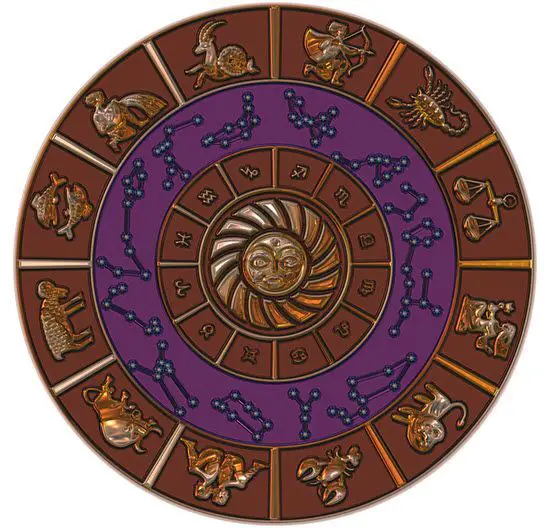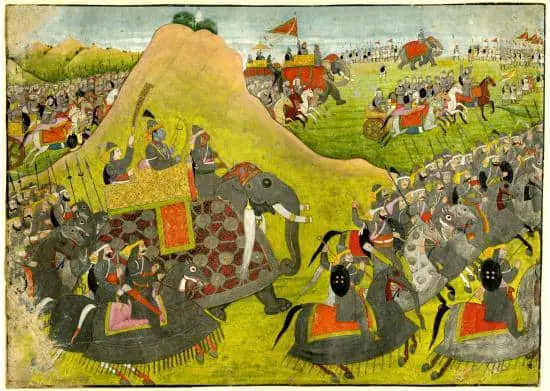This post offers insight into the major differences between Valmiki Ramayana and Tulsidas Ramcharitmanas.
So, it helps you understand the basics and know the comparisons of these two great Indian Epics, which describe the journey of Lord Rama (Lord Vishnu’s incarnation on Earth).
In fact, there are many differences between Valmiki Ramayana and Tulsidas Ramcharitmanas. However, here we tell you some of the crucial ones.
Moreover, Valmiki Ramayana is regarded as the original source of Lord Rama’s story. However, it is said that Tulsidas wrote Ramcharitmanas as heard from Lord Hanuman directly.
Valmiki Ramayana is regarded as one of the greatest literary works of ancient India. Ramayana was written by Sage Valmiki and consisted of 24,000 verses, which have been divided into seven Kandas (chapters).
Ramcharitmanas is a reproduction of Valmiki Ramayan, which was written by Indian bhakti poet Goswami Tulsidas in the 16th century CE. It has attained as much popularity as Valmiki Ramayan.
It is a narration by Lord Shiva to Goddess Parvati. In fact, the word “Ramcharitmanas” means the lakes of the deeds of Lord Rama. It is regarded as one of the greatest literary works of Hindu mythology.

Here, we would be telling you about the 10 major differences between Valmiki Ramayana and Tulsidas Ramcharitmanas.
Table of Contents
10 Differences Between Ramayana and Ramcharitmanas
So, let’s begin:
Difference #1: Date of Composition & Meaning
It has been estimated that Ramayana was written by Sage Valmiki between 1500 and 500 BC. However, the exact date of its composition is still unknown.
According to popular Hindu belief, Valmiki wrote Ramayana in Treta Yuga. In fact, Sage Valmiki was a contemporary of Lord Rama. Valmiki wrote The Ramayana in Sanskrit.
It was an Indian bhakti poet and Saint Goswami Tulsidas who wrote Ramcharitmanas in the 16th century AD. So, Ramcharitmanas was written in Kaliyuga.
Tulsidas wrote Ramcharitmanas in the Awadhi dialect of Hindi to make it accessible to everyone. He simplified the excellent knowledge contained in the stories of Valmiki Ramayana.
The word “Ramayana” has been made up of two words – Rama + Aayanam (story). So, the meaning of Ramayana is Rama’s story.
However, Ramcharitmanas comprises three words – Ram + Charit (good deeds) + Manas (lake). So, Ramcharitmanas means the lake of good deeds of Rama.
Difference #2: Chapters & Format used in Valmiki Ramayana and Ramcharitmanas
Valmiki Ramayana consists of seven chapters or Kandas, which have been described as follows:
- Bala Kandam
- Ayodhya Kandam
- Aranya Kandam
- Kishkindha Kandam
- Sundara Kandam
- Yuddha Kandam
- Uttara Kandam
Ramcharitmanas is also divided into seven chapters. However, Tulsidas has changed Yuddha Kandam to Lanka Kand.
This is one of the main differences between Valmiki Ramayana and Tulsidas Ramcharitmanas.
Valmiki has used the ‘Slokas’ format in Ramayana, while Tulsidas has used the ‘Chaupais’ format in Ramcharitmanas.
In fact, Ramayana is the original story of Lord Rama, while Ramcharitmanas is the retelling of the Ramayana. Moreover, Tulsidas has acknowledged Sage Valmiki in his book.
Difference #3: Wives of King Dasharatha
As per Valmiki Ramayana, King Dasharatha had over three hundred and fifty wives out of which three were principal wives, namely:
- Kaushalya
- Kaikeyi
- Sumitra
However, in Tulsidas Ramcharitmanas, King Dasharatha has been depicted as having only three wives, namely Kaushalya, Kaikeyi, and Sumitra. Rama, Bharat, Lakshman, and Shatrughna were the children belonging to these three wives of Dasharatha.
Difference #4: Lakshman Rekha
Valmiki Ramayana does not mention the episode of Lakshman Rekha in the Aranya Kanda, which is linked to Sita’s abduction. It has been described that Lakshman moved away from the hut after folding his hands before Sita. No verse has been written depicting the presence of any kind of line for the protection of Sita.
It is in Tulsidas Ramcharitmanas that the popular story of Lakshman Rekha has been introduced. Lakshman’s protection is drawn around the hut to protect Sita from any being or wild animal from outside, which would be destroyed if it dares to cross this line.
Difference #5: Depiction of Lord Hanuman
In Valmiki Ramayana, Lord Hanuman has been depicted as a human who belongs to the “Vanara” tribe.
The word Vanara is composed of two words – “Van” meaning forest + Nara meaning man.
In Valmiki Ramayana, Lord Hanuman has been described as belonging to tribes that live in the forest and referred to as Vanara.
However, Tulsidas Ramcharitmanas, Lord Hanuman, has been depicted as a monkey, and “Vanara” is used as a species of monkeys.
Difference #6: Depiction of Lord Rama
In Valmiki Ramayana, Lord Rama has been depicted as a human being referred to as “Maryada Purshottam.” However, in Tulsidas Ramcharitmanas, Lord Rama has been portrayed as the incarnation of Lord Vishnu.
So, in Ramayana, Lord Rama acquired all his skills through practice and devotion. In Ramcharitmanas, Lord Rama is shown to possess all kinds of powers & virtues already as he is the incarnation of Lord Vishnu himself.
Difference #7: Characterization of Sita
The characterization of Sita is shown to be quite different in Valmiki Ramayan and Tulsidas Ramcharitmanas.
While both these versions retain the same base of Sita’s character as a pious woman who is loyally devoted to her husband, the aspect they differ is Sita’s outlook.
In Valmiki Ramayan, Sita has been portrayed as a strong, outspoken, and aggressive woman. However, in Ramcharitmanas, she is shown as a submissive, reticent & soft-spoken woman.
Tulsidas choose to portray Sita’s character, which was contrary to her attitude in Valmiki Ramayana because, in the 16th-century, women were given subordinate position to men. They had no say in worldly matters and were oppressed in all fields.
Difference #8: Sita Swayamvara
As per Valmiki Ramayana, King Janaka did not organize Sita Swayamvara as a mass function. Whenever some mighty person visited the Janaka kingdom, he would show them Shiva Dhanus and ask them to lift it.
Once, it so happened that Sage Vishwamitra, along with Rama and Lakshman, visited Janaka. So, Janaka showed the Shiva Dhanus to Rama. Lord Rama lifted the bow quickly and was married to Sita.
However, the episode of Sita Swayamvara is mentioned in Ramcharitmanas. King Janaka organized Sita Swayamvara as a contest for lifting the Shiva Dhanus. Sita will choose the person who can raise the Shiva Dhanus. Nobody was able to lift the bow until Lord Rama came to lift it. Ultimately Sita was married to Lord Rama.
Difference #9: The abduction of Sita
In Valmiki Ramayana, the abduction & suffering of Sita is real. Ravana forcefully kidnapped Sita and carried her to Lanka. Lord Rama rescued Sita by killing Ravana. Sita is asked to prove her purity to the world by giving Agni Pariksha.
However, in Ramcharitmanas, the real Sita was not kidnapped. Lord Rama foresaw the abduction of Sita. So, he sends the real Sita to Agni Deva and creates the clone of Sita. So, the Agni Pariksha was just a method to exchange the clone of Sita with real Sita.
Difference #10: Ravana’s fight with Lord Rama
According to Valmiki Ramayana, Ravana fought with Lord Ram two times. Firstly, Ravana fought with Lord Rama at the beginning of the war. He was humiliated and left alive. Secondly, Ravana fought with Lord Rama at the end of the war and was killed. However, as per Ramcharitmanas, Ravana came to battle with Lord Rama once at the end of the war and was killed.
Rama’s story ends in Valmiki Ramayana when Lord Rama drowns himself in the Saryu River, saddened by the absence of Sita and Lakshman. However, the story ends in Ramcharitmanas with the birth of twin sons – Luv & Kush to Rama and Sita.
Well, those were the major differences between Valmiki Ramayana and Tulsidas Ramcharitmanas. We hope that you found the post useful and interesting. Thanks for reading. We welcome your comments and suggestions.




